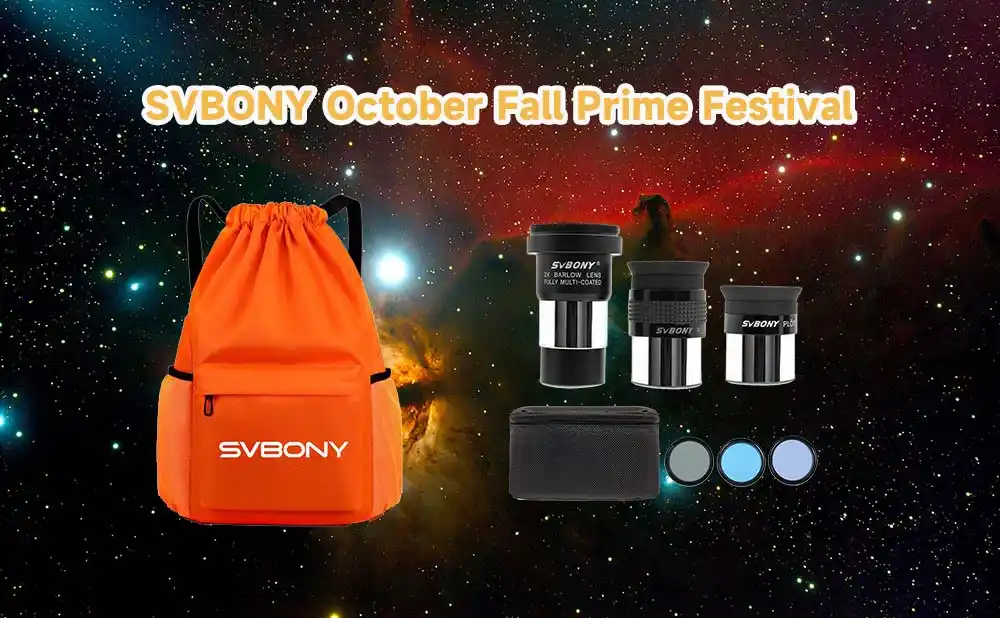Introduce
Every year in mid-August, astronomy enthusiasts look forward to a grand visual feast - the Perseid Meteor Shower. As one of the most popular and spectacular meteor showers of the year, the Perseid meteor shower has attracted widespread attention for its large number and outstanding brightness. This blog will provide you with a detailed observation guide to help you enjoy the charm of meteors on this summer night.

Here's everything you need to know to catch the show:
📅 When: The peak is expected between August 11th and 13th, with the best viewing times after midnight and before dawn.
📍 Where: Find a dark spot away from city lights. The countryside or a remote park is perfect!
🔭 What to Bring:
·A blanket or reclining chair—You'll want to lie back and relax.
·Warm clothes—Even in summer, nights can get chilly!
·Snacks and drinks—Enjoy the experience to the fullest!
·Binoculars or a telescope—It is recommended that you use SV205 Binoculars to observe meteor showers and get a better viewing experience.
If you want to observe the deep sky while waiting for the meteor shower, then I recommend you to bring the SV48P 102mm telescope. This is a new telescope that is light and easy to carry, with a larger aperture and can observe more details.

Tips for Best Viewing:
Let your eyes adjust to the dark for 20-30 minutes.
Look up and scan the sky—No need to focus on a single spot; meteors can appear anywhere!
Be patient—The longer you watch, the more you’ll see.
Global Observation Tips:
🌎 North America:
Best Time: The peak will be on the night of August 12-13. Look up after midnight for the most meteors!
Where to Go: Head to rural areas away from city lights. National parks are perfect for a dark sky experience.
Weather Tips: Clear skies are key! Check local weather forecasts and head to areas with less cloud cover.
🌍 South America:
Best Time: Watch after midnight on August 12-13. The meteors will be visible in the northeastern sky.
Where to Go: Find a spot with minimal light pollution. The Andes region offers some of the darkest skies.
Weather Tips: Southern areas might have clearer skies. Be prepared for cool temperatures in higher elevations.
🌏 Asia:
Best Time: Peak viewing will be in the early morning hours of August 13. The northeast sky will be your target.
Where to Go: Remote areas outside major cities are ideal. Locations like the Himalayas or rural Japan offer great viewing.
Weather Tips: Monsoon season could affect visibility in some regions. Try to find higher altitudes with less cloud cover.
🌍 Europe:
Best Time: The night of August 12-13, after midnight. Meteors will be most visible in the northeastern sky.
Where to Go: The countryside or mountains offer the best viewing away from urban light. The Scottish Highlands and rural Scandinavia are top spots.
Weather Tips: Clear skies are essential. Coastal areas might offer better visibility if inland weather is cloudy.
🌏 Australia & New Zealand:
Best Time: Look for meteors in the pre-dawn hours of August 13.
Where to Go: Dark sky locations in rural areas are best. Outback Australia or New Zealand’s South Island are ideal.
Weather Tips: Winter skies are usually clearer. Dress warmly and enjoy the show!
General Tips:
Bring: A blanket, a reclining chair, snacks, and warm clothing.
Allow: At least 20-30 minutes for your eyes to adjust to the dark.
Look: Towards the northeast sky for the best meteor activity.
Conclusion:
Meteor shower observation is not just a solitary activity, it is more important to share this experience with family and friends. You can organize a small camping or party, where everyone can appreciate the beauty of meteors together and share their wishes and expectations. I hope these suggestions can help you have an unforgettable experience in the upcoming Perseid meteor shower! Let's look up at the starry sky together, wait for the meteors that streak across the sky, and make our wishes!









